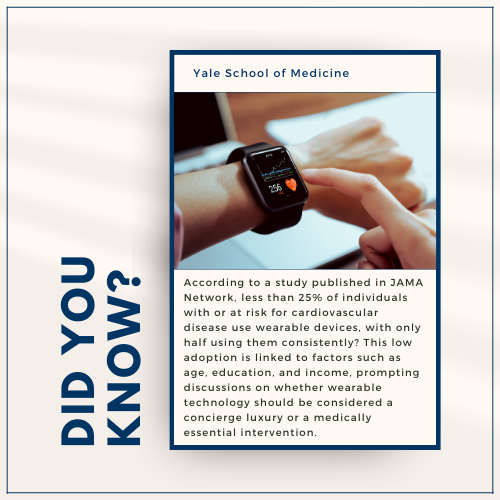Cardiovascular health is a critical aspect of overall well-being, impacting individuals and societies globally. As we navigate the complexities of the modern world, understanding the trends in cardiovascular health becomes paramount. This article delves into the journey from raw data to meaningful impact, shedding light on the significance of cardiovascular health trends.
Understanding Current Global Cardiovascular Health Statistics
A special issue of the Journal of the American College of Cardiology (JACC) highlights cardiovascular disease (CVD) as the leading global cause of death.[1] The report, by the Global Burden of Cardiovascular Diseases Collaboration, examined 18 CVD conditions and 15 risk factors across 21 regions. Central Asia and Eastern Europe exhibit the highest CVD mortality rates, with factors like high blood pressure, high cholesterol, dietary risks, and air pollution being major contributors globally.
With over 80% of CVD cases deemed preventable, ischemic heart disease tops cardiovascular deaths, while high systolic blood pressure remains a leading modifiable risk factor. This emphasizes the need to address modifiable risk factors and provide global trends, contributing factors, and prevention strategies.
Trend Analysis for Cardiovascular Health
As the mortality-to-incidence ratio for Cardiovascular Diseases (CVD) continues to rise, a pressing need emerges to delve into the depths of these trends. The increasing burden of CVDs worldwide warrants a comprehensive understanding of the factors contributing to this shift, as well as proactive measures to mitigate its impact.
1. Determining the Mortality-to-Incidence Ratio
The mortality-to-incidence ratio serves as a crucial indicator, reflecting the proportion of deaths to the total number of new cases diagnosed. A rising ratio is indicative of a higher mortality rate relative to the incidence of new cases, emphasizing the severity of the cardiovascular health crisis.
2. Identification of Key Contributors
Trend analysis involves the identification of key contributors to the escalating mortality-to-incidence ratio. Factors such as lifestyle changes, aging populations, socio-economic disparities, and evolving healthcare infrastructures all play pivotal roles in shaping these trends.
Comprehensive epidemiological studies, which explore these factors on a global scale, are instrumental in pinpointing specific areas or demographics where interventions are most urgently needed.[2]
3. Exploring Lifestyle Shifts
The modern era has witnessed profound changes in lifestyle, with sedentary habits, poor dietary choices, and heightened stress levels becoming pervasive. These shifts significantly contribute to the surge in CVDs. Trend analysis must delve into the intricate connections between lifestyle changes and the rising ratio, offering insights into potential intervention points.
4. Aging Population Dynamics
As populations around the world age, the prevalence of cardiovascular diseases tends to increase. Trend analysis must consider the implications of this demographic shift, emphasizing the need for targeted healthcare strategies catering to the unique needs of elderly populations.
5. Socio-Economic Disparities
Disparities in access to healthcare, education, and economic resources contribute to variations in the incidence and outcomes of CVDs. An in-depth trend analysis should uncover the nuances of these disparities, guiding policymakers toward equitable interventions.
6. Evolving Healthcare Infrastructures
The state of healthcare infrastructures, both globally and within individual regions, plays a pivotal role in determining CVD outcomes. Trend analysis must assess the capacity and efficiency of healthcare systems, identifying areas for improvement and innovation to enhance prevention, diagnosis, and treatment.
7. Proactive Interventions
Armed with insights from trend analysis, proactive interventions can be designed to address the root causes of the escalating mortality-to-incidence ratio. Targeted public health campaigns, policy reforms, and community-based initiatives become essential components of a comprehensive strategy.
8. Harnessing Technology for Trend Analysis
Technological advancements, particularly in data analytics and machine learning, offer powerful tools for trend analysis. Big data analytics can process vast datasets, identifying patterns and correlations that might elude traditional analysis methods. Machine learning algorithms contribute to predictive modeling, aiding in the anticipation of future trends.

9. Global Collaboration and Knowledge Exchange
Cardiovascular health is a global challenge that necessitates collaborative efforts. Trend analysis should not only focus on individual regions but also encourage the exchange of knowledge and best practices globally. International collaboration can lead to more effective strategies, taking into account diverse cultural, social, and economic contexts.
Future Directions in Cardiovascular Health Trends
The future of cardiovascular health trends is closely tied to ongoing technological advancements. From the integration of artificial intelligence in diagnostics to the development of more sophisticated wearable devices, the possibilities are vast.
In an episode of McKinsey’s podcast The Venture,[3] Joel Portice, president and CEO of egnite mentioned that their NLP has a 99.9 percent accuracy rate in finding patients and prioritizing them for immediate care.
Anticipating future advancements, the integration of new technologies like artificial intelligence, machine learning, and virtual reality with traditional mobile technologies is highlighted. Cost-effectiveness analysis is suggested as a crucial criterion to measure the effectiveness of mHealth interventions, alongside traditional health outcomes.[4]
Infodemiology, the study of how people access and engage with health information online, is identified as an emerging area of interest. Integrating infodemiology into mHealth interventions is recommended to empower individuals to make informed decisions and address specific informational needs.[5]
In essence, as we navigate an increasingly complex healthcare landscape, prioritizing cardiovascular health research and initiatives becomes not just a necessity but a collective responsibility. The future health of individuals and societies hinges on our ability to translate data into impactful interventions that promote cardiovascular well-being.
References
1- New Report Tracks Latest Trends in Global Cardiovascular Health. American College of Cardiology. https://www.acc.org/About-ACC/Press-Releases/2022/12/12/19/20/New-Report-Tracks-Latest-Trends-in-Global-Cardiovascular-Health.
2- Wong, N. D. Epidemiological Studies of CHD and the Evolution of Preventive Cardiology. Nature Reviews Cardiology 2014, 11 (5), 276–289. https://doi.org/10.1038/nrcardio.2014.26.
3- The Venture Podcast | McKinsey Digital | McKinsey & Company. www.mckinsey.com. https://www.mckinsey.com/capabilities/mckinsey-digital/leap/leap-insights/the-venture-podcast (accessed 2023-10-12).
4- Ni, Zhao, Santi Martini, Erin M. Spaulding, Arief Hargono, and Seth Shay Martin. “Editorial: Future Trends and Directions of Using Mhealth Strategies to Prevent and Treat Cardiovascular Diseases.” Frontiers, June 29, 2023. https://www.frontiersin.org/articles/10.3389/fpubh.2023.1246918/full.
Author:

Uttkarsha Bhosale
Editor, Enago Academy
Medical Writer, Enago Life Sciences
Connect with Uttkarsha on LinkedIn

